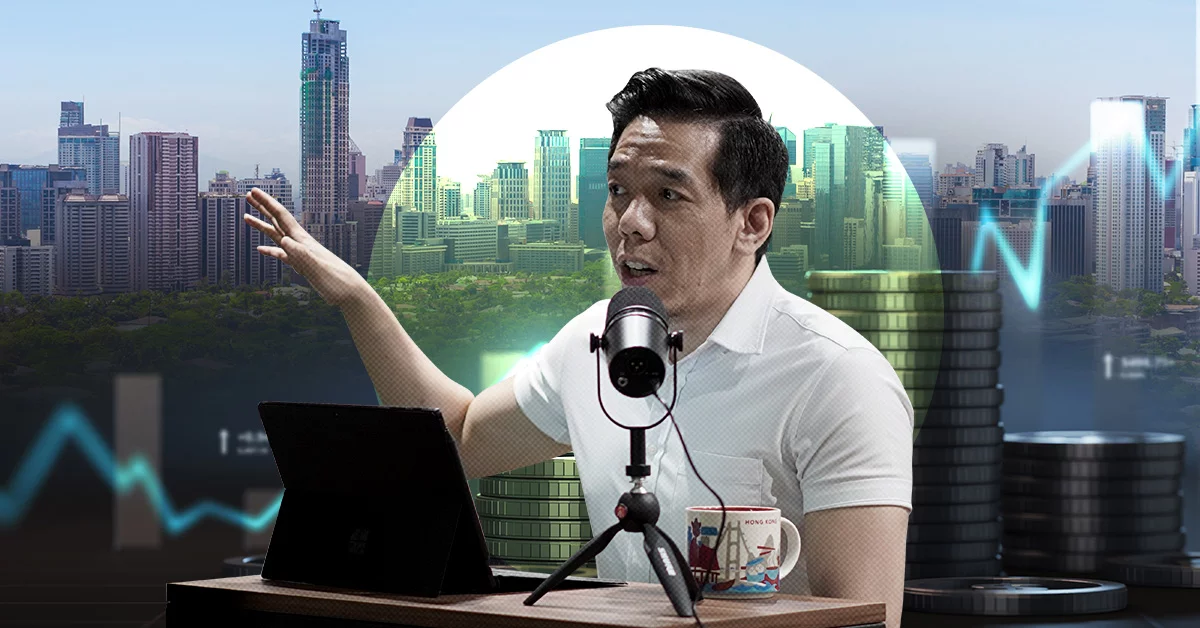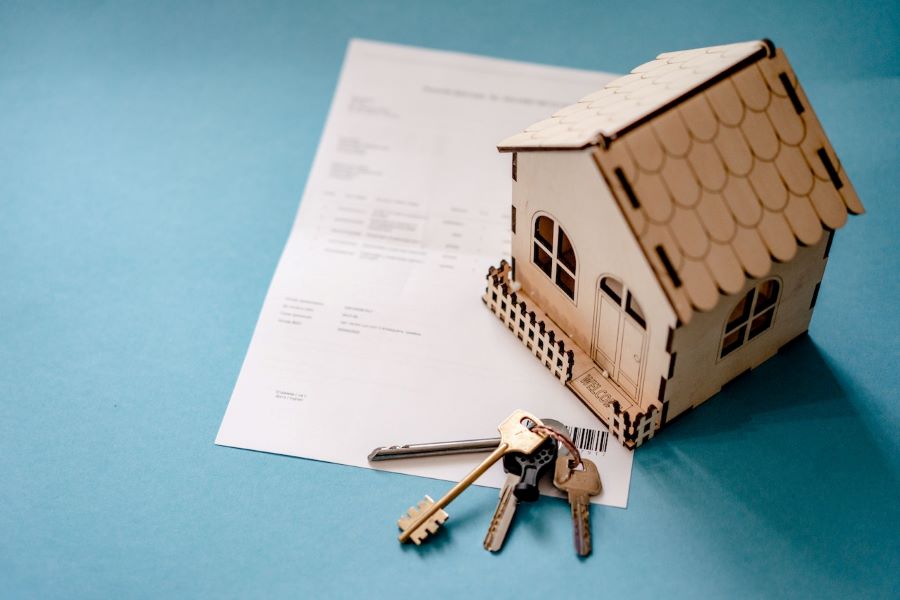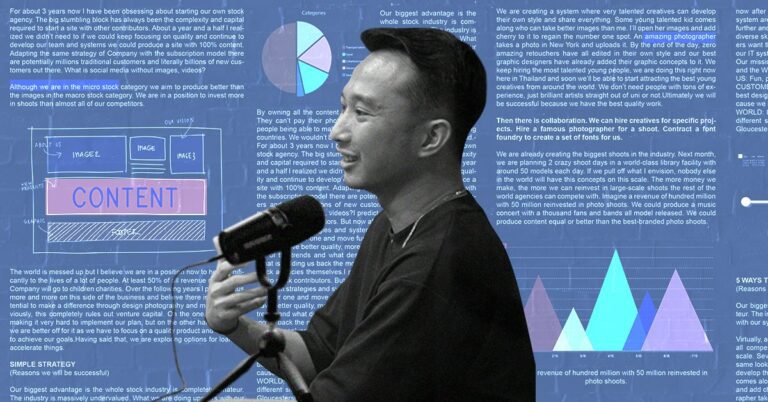Truelogic Episode 71 Recap: The State of the Philippine Economy 2023

Just last year, the Philippines’ GDP surged to $400 billion, outpacing ASEAN and global averages with this booming GDP, vehicle sales, real estate, and reduced poverty. With the rise of online shopping and a projected $600 billion economy by 2028, we’ll help you understand how you can make the most of this economic boom.
Podcast Transcription
Berns San Juan: This podcast episode contains optimistic content. If you are a pessimist or love bad news, you might either want to move to another podcast or take your antihistamines now. So good news warning. There is a lot of good news in this podcast episode. Confirmation bias warning. I’m an optimist, right? And so I tend to take a look at news and I look for things that tend to confirm my positivity. So welcome to another episode of the Truelogic DX podcast.
Philippines’ GDP Growth
On this episode, I’m going to zoom out because a couple of months ago, as I tend to do, I like to look at large economic Philippine data. And one of the things that I always have trouble reconciling, is that if you’re selling anything in the market, you want to know how confident your market is when it comes to buying and selling services.
One of the things I always look at is many people might not know, but the Bangko Sentral conducts a CES survey against 5,000 households, average households in the Philippines. And they came up with what’s called the confidence index. Think of it as the consumer confidence index that’s done in the United States periodically. And the negative number usually means people feel bad about the economy and their economic standing and a positive number usually means people feel optimistic about the economy. So good news warning.
The Philippines crossed the $400 billion marker in terms of GDP size last year. And we crossed that threshold with a whimper. It’s so sad. So if I take a look at the confidence index, we sort of scored at -15.1.
And before that, it was -24, and then before that, it was -13.8. But clearly in the pessimism mark, and I have trouble reconciling that when the GDP of the country has been growing slowly but surely. Just to give everybody some objective perspective, the gross domestic product of the Philippines sets all the money slushing around in the economy. All the economic activity, all of the purchases, all the government investments, everything that you buy, everything that you sell goes into the GDP figure.
In 2017, the Philippine economy was about 320 billion, 328 billion, to be precise. But in 2017, so we’re talking like maybe six years ago, the Philippine economic size was about 328 billion. And at the close of 2022, we crossed the 400 billion marker. We were only a $300 billion economy for five to six years before we moved on to the next before we moved on to the next tier.
And sure, we took a hit during COVID. We shrank by about 15 billion because, in 2019, the Philippine economy was almost 380 billion. And then we shrank to about 361 billion in 2020, right? We all got locked down. Some people lost their jobs. People could not pursue economic activity. But in 2021, we rebounded from 361 to 394 billion. And in 2022, we are into the 400 billion territory. And it’s, you know, it’s estimated to grow by a lot. And I’ll give you the figure forecast later.
So objectively speaking, there is more money moving in the economy. More investments are coming in and the spending power of the average Filipino is getting better. Why is the sentimentality towards the Philippine economy so bad? That’s not the question I’m going to answer. What I am going to do is I’m going to try to argue with objective data why things are getting better and why you should feel good about the country, our economy, how we’re headed in the right direction.
And then I’ll sort of let you judge for yourself how you feel about how the economy is moving forward. So, a country whose GDP grew by almost 80 billion in like six years, how does that translate to nominal per capita GDP? This is like the average income of the average Filipino.
In 2017, let’s use the same figure, the per capita GDP of the average Filipino was about $3,000. And today it is about $3,500. So not a lot. In short, on an annual basis, the average Filipino is wealthier by about 25, 29,000 pesos annually, right? So not life-changing, but still an improvement, right? Because like GDP, the per capita metric dropped during COVID. Everybody got poorer by about 10,000 pesos annually. We quickly got over that in 2021.
And so today, from 2017 to current, we are all making about $500 more than we would have six years ago, right? Only if $500. For many people, I think it is significantly better. What this does is it ranks the Philippines as the 36th largest economy globally, right? And that’s almost against almost 200 countries that are ranked in total. The view for the forecast of how the economy will continue to grow in 2023 is fairly optimistic. Like people, I think, are estimating that we will cross into the 440s, right? That is almost 10%. You’re looking at over 8% growth. And so when I think there’s reason for people to be bullish about how the Philippine economy will perform, I remember last year, the initial estimates were 5.5%.
Like people were estimating, oh, the Philippines is probably going to grow by 5.5%. We grew by 7.5%. And while the world was facing down inflation rates of 7.5%, 8%, double digits in some areas, the Philippine inflation rate was like 4.5%. Like it wasn’t horrible, right? It was livable. It was, in short, that our incomes grew faster than inflation.
Per Capita Growth and Poverty Reduction in the Philippines
And so I think all of that translates to pretty much good news. Now, I don’t just want to spout those and not prove it. So I am going to prove it with a couple of metrics. So let’s take objective poverty metrics as an example. And this is as measured by the World Bank, right? The poverty index in the Philippines was at 23.1% in 2017. In 2022, it is at 16.6%. Still, it’s a tragedy, right? And it’s still a disgrace. A 16.6% poverty incidence is still a disgrace. But 23.1% to 16.6% is also called progress. And so there are fewer poor people in the country. I will even argue that we did not slide back to over 20% even during the pandemic. When we all got locked down, the poverty index grew to about 19.8%. But it did not cross back into the 20% threshold. We kept it down at 19%. We dropped it by almost 2 points in 2021. And we dropped it again by almost another 2 points in 2022, where now we’re at 16%.
So poverty is up, GDP is up. The nominal per capita GDP, the income of every person, or the economic participation of every person on average is up. Poverty is down. Let’s talk about some other indicators. This one you’ll need to take with a grain of salt. Vehicle sales. The total vehicle sales year on year have been growing, but they haven’t grown to pre-pandemic levels. The peak car sales in the country in 2017, when over a quarter of a million cars were sold nationally.
Booming Automotive and Real Estate Sectors

In short, Filipinos have money. You wanna know why it’s traffic on EDSA? Because we buy 200,000 cars every year. And in 2022, that was much larger. And the estimate is that this will grow by 20% year on year on year until we beat the peak of 2017. So Filipinos are buying more and more cars. Okay, so people are going places, are they staying places, are they buying homes, are they settling down, are they building families? Well, it looks like the answer to that too is yes. The peak housing sales, or the peak housing volume in the country was achieved right before COVID. Since 2020, right in 2020, we moved 24.6 thousand housing units, or at least that’s the number of units that got sold. This is a combination of condos and housing lots but limited to residential properties only. But we sold 24.6 thousand housing properties in 2020, 26.4 housing units in 2021, and about 31.5 thousand housing units in 2022.
The estimate is that from 2022 to 2023, we’re probably looking at a growth of 20%, so you’re probably going to see 37 thousand homes. And this is not counting, these don’t count the homes where you’ve got an ancestral home, you tore it down, you built something new, right? These are new home sales. So again, larger income, larger economic activity for most Filipinos, larger GDP for the entire country, more vehicle sales in the past, or vehicle sales increasing over the past three years, more homes getting sold, 20% and 20% more coming on the way this year, poverty incidents down. Things look good. Now because I am digital, you know that what I pay attention to the most, I just mutate, get distracted, and digress into the larger economy. But most of the time, I ask these questions when I review Philippine digital economic data, right? Like so normal, because I like to take a look at the Philippine digital economic data, year on year on year on year because that’s the industry I’m in. I also look at digital marketing data, right? What is the size of the digital marketing industry in the country and how is it growing year on year?
And I insist that my organization grow faster than what the average growth rate in the industry is, otherwise, we’re just going with the flow. But I do try to take a look at the digital economy because the digital economy is what determines what demand I have in the market. And I’m going to translate these into US dollars. I’m going to give you the peso equivalent. It’s just that, you know, my having worked with Western businesses and international clients, my brain tends to think in US dollars. So the Philippine digital economy was about 1.32 trillion pesos in 2017. So you’re talking about 23 billion dollars roughly, right? In that grew to about 26.5 billion in 2018. So that’s about 1.4 trillion-ish pesos. We’re talking about almost 29 billion US dollars in 2019. And then it grew to 31 billion dollars or 1.7 trillion pesos in the year of the pandemic.
The Philippines Digital Economy’s Flourish
The real whopper, the real growth happened in 2021, where there was a lot of digital adoption, a lot of people went online, brands learned to pivot, they went online, and they went to marketplaces. People started buying from Lazada and Shopee all around. And so it’s not a wonder that the largest contributors to the Philippine digital economy by the way, the Philippine digital economy is roughly almost about 10% of the total economic activity of the country.
The top activity that contributes to the size of that economy, e-commerce, right? Anything you buy and sell online, food delivery, anything that you order and pay for online, video on demand, online gaming is part of that. Online education is now part of this too. Some brands pivoted specifically to online education and online training. In online health, people were able to access HMO by prepaid healthcare services. Online and then, of course, you know, travel, which was a bit in the dumps in 2020 for common sense reasons by now. But used to be a significant chunk of what comprised this activity.
E-commerce in the Philippines
Just to give you guys a bit of context, e-commerce in the Philippines was $9.8 billion. That’s over 500 billion pesos in economic activity, right? E-commerce comprises about a fourth of the Philippine digital economy. Food delivery is 21.6 billion, a figure that grows year on year on year even though we’re able to see each other now, even though we can eat out. We still like to order in. It’s just one of those, you know, COVID habits that we never manage to shake off. Video on demand has taken a bit of a slump, right?
But it’s still about 5.7 billion pesos in activity. Terrific. I still don’t understand how online gaming is beating online streaming. Online gaming is triple the value of video on demand. So online gaming is almost 20 billion pesos in activity. Online education is almost 4 billion in economic activity. Online health is about 2.4 billion, right? Online travel is almost 100 billion.
Key Takeaway
So in short, like, and just to summarize this, right, because this is a feel-good, I want you to look up because there’s a lot of up still to look at, right? There’s still a lot of upside to look at. In conclusion, the Philippine economy grew to over 400 billion dollars. That’s a big deal.
That’s a big deal because we are growing at a pace or better than our ASEAN neighbors and definitely ahead of the global average. The global economy grows at about 2-3%. So we’re doing well. Poverty is down. Nominal per capita GDP is up. We’re buying more cars. We’re buying more homes. We’re buying more stuff online. We’re ordering in more frequently. We are paying for our streaming. You know, it’s not like cable where you can steal your… We’re no longer stealing our neighbor’s cable. We’re studying online. We’re buying health products online and so on.
So you know, I hope that in the short conversation that I had with you, you develop your own perspective on the Philippine economy. We are expected to be a 600 billion dollar economy by I think around 2028-ish, like thereabouts of that figure. I can’t wait, right? That means we’re probably only going to be a 400-billion-dollar economy for three years before we blow past it. But if you are… I think if you are economically fortunate enough to be listening to this podcast, that means you can afford the internet, you can afford a smartphone, you can afford a lot of stuff, right? You can afford to be online.
You are part of this growing economy. The questions you should be asking yourselves are A, How do you participate in growing this economy? And we do this by growing our economies, right? But how do you participate in this? But more than that, in the community you work in, and when I say community, you’re a company. The business you work in is part of your community.
How do you help the business, the organization, and the institute that you work in that puts food on your table, capture more of this economic activity, and help bolster this economic activity? Because I think together, you know, we will be able to buy more homes, buy more cars, get more people out of poverty, and grow the economy faster. In the same way that I think we blew past the GDP growth expectations.
And the Philippines, by the way, almost always blows past what that expectation is. We almost always blow past the inflation expectations. Our inflation is usually pretty low, right? The Philippines gets a high of like 7% and a low of like 3. We average at about 4. I think if you continue to participate, we as a country will continue to blow past every economic expectation of us.
And you know, what I will say is that’s great because that means we all prosper together. I hope after listening to me for the past few minutes, you feel good about being in the country, being Filipino, and doing meaningful work.
I want to thank all of the people who participated in producing the podcast. I want to thank you for your time. I want to thank the people at Podmachine for participating in the economy and for powering the Trueloogic DX Podcast. If you want to have more conversations like this, if you want to have, if you’re curious about data points, let us know. Truelogic DX is available on Spotify, Google, and Apple accounts.
Leave us a comment on YouTube or Facebook because we do listen. And I’ll see you guys on the next episode. I hope you have some good hope I leave you guys with some good feelings. Cheers, and see you on the next one.










